It’s a well-known fact that daily physical activity is essential for health, and sports are a great way to stay active in a fun environment.
But it’s not just the physical activity of sports that keeps people healthy. Sports teach important social and life skills and have many psychological benefits. Team sports in particular offer more psychosocial benefits than solo sports. In an analysis by Healthy Sport Index, the top high school sports for psychosocial benefits were boys football, girls softball, and boys and girls soccer. Some of the lowest ranked were track and field and cross country.
One study concluded that “involvement in sports had a positive influence on the satisfaction with life” in university students. Another study found that, “97% of team athletes graduated from high school — which is 10% more than students who did not participate in team sports.”
According to Health.gov, participating in team sports is associated with improved teamwork and social and life skills, and increased empowerment, self-control, occupational skills, and leadership qualities.
Therefore, they teach essential skills for children to learn and take into adulthood. Additionally, children who play sports are eight times more likely to be physically active at age 24 than those who do not play sports.
But the benefits of team sports don’t stop after childhood.
Lifelong participation in sports can lead to improved mental health. In fact, over 50% of adults who participate in sports believe it reduces stress and improves mental health. By overcoming challenges alongside others, participants can build confidence and diminish self-seeking tendencies.
Although it is clear that team sports offer a variety of physical and psychological benefits, “of the nearly 8 million students currently participating in high school athletics in the United States, only 495,000 of them will compete at NCAA schools,” says the NCAA. After college, the opportunity to play sports decreases even more rapidly.
Then what? How can children continue to reap these benefits after exhausting their sport options?
The answer is CrossFit.
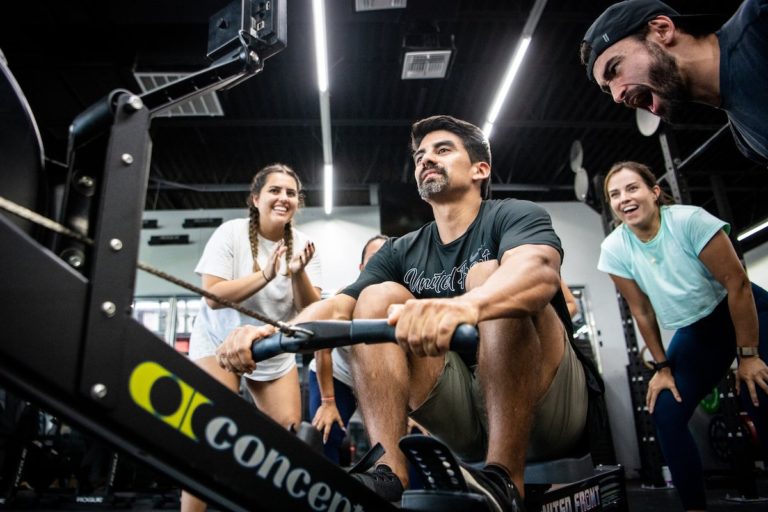
United Front CrossFit | Photo by flsportsguy photography
CrossFit and Team Sports
CrossFit was built on the concept of constantly varied functional movements executed at a high intensity. Over time, CrossFit developed into a web of affiliates. Later, the CrossFit Games — or the Sport of Fitness — were created.
The ethos, community, and sport were built organically from the methodology.
“When we show up honestly and imperfectly and stretch ourselves to our limits; when we celebrate each other, when we succeed and pick each other up when we fall, community is a natural outcome,” Nicole Carroll said in the article “The CrossFit Community: More Than the Sum of Its Parts.”
In a CrossFit class, athletes learn social and life skills. They feel empowered while understanding how to overcome challenges.
For athletes who choose to compete in the CrossFit Games season — particularly the team division — they learn teamwork, leadership skills, and self-control.
These are all qualities seen in traditional team sports. But CrossFit provides athletes with an opportunity to benefit from sport for life.
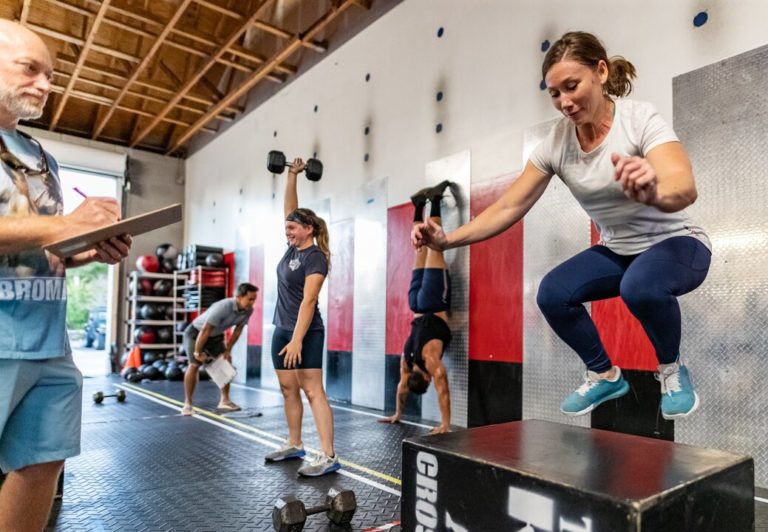
Open Workout 22.1 at Treasure Coast CrossFit | Photo by Tai Randall
How a CrossFit Class Mimics Team Sports
In a way, a CrossFit class is like your sports team. You have a coach, and your classmates are your teammates. They are there to support you through challenges, cheer you on through your successes, and lift you up when you fail.
“(At CrossFit) you have a team behind you to pick you up,” CrossFit Roots owner Nicole Christensen (CF-L4) said. “You learn how to deal with failure, and also have genuine, supportive people that want the best for you and want you to succeed and want you to reach your goals.”
Competition also bleeds into this class setting. Athletes compete against each other to get a better time in the workout or to lift more weight. Athletes compete against themselves to PR their workouts. Scores are always documented on the whiteboard at the end of class — mimicking a leaderboard.
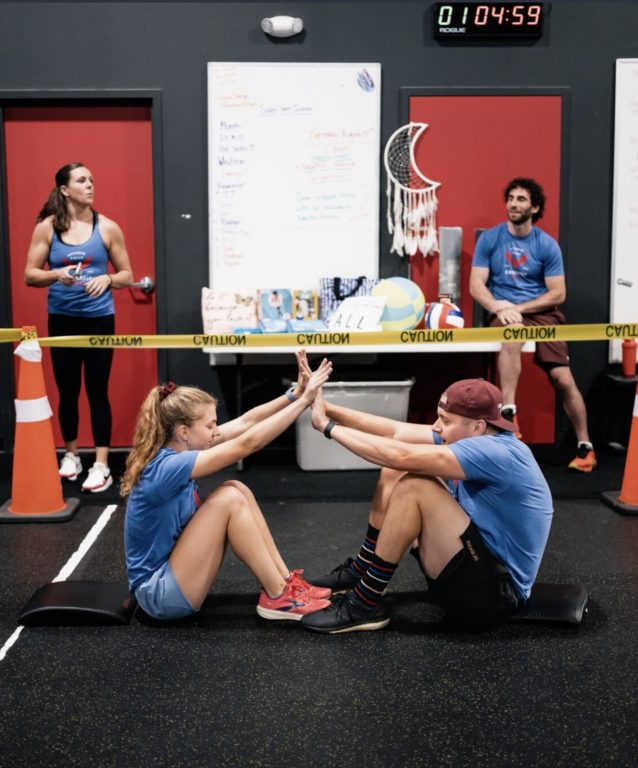
Chargrin Falls CrossFit
Sometimes CrossFit programs partner workouts, which add an extra layer of accountability. Athletes learn how to work with a partner and are pushed harder when they have someone else relying on their performance.
CrossFit doesn’t just provide adults with a team sport to enjoy. Through CrossFit Kids, children learn to enjoy physical activity at a young age while developing all the psychosocial skills traditional team sports teach.
But what is unique about CrossFit that can’t be found in traditional team sports is it provides kids with something to be good at. Kids might not be good at every sport they try, but in CrossFit, although they may not have the best squat or a heavy deadlift, they will discover something they excel at — perhaps something they never imagined they could achieve.
Exposing children to skills that are both challenging but teachable promotes perseverance.
“At a CrossFit kids class, you’re still doing CrossFit, but just the way they do it is different than (in) adult class,” co-owner of CrossFit NCR Reza Mashkoori said. “But also it’s our (adult) playground. When we’re jumping ropes and we’re trying to walk on our hands and stuff, we kind of feel like a kid when we come to the class as well.”
Adults never outgrow playing, learning, and challenging themselves. CrossFit allows adults to re-experience playing sports as a child.
This is why many former athletes turn to CrossFit after retiring from their sports.
“CrossFit is the perfect place for any former athlete to kind of recenter themselves in a new way of competing and measuring by themselves and seeing that progress. … Whether you’re a club sport athlete, intramural, or an NCAA champion, athletes understand that things are not instantaneous, and that things take work,” CrossFit Senior Director of Sport Operations Heather Lawrence said.
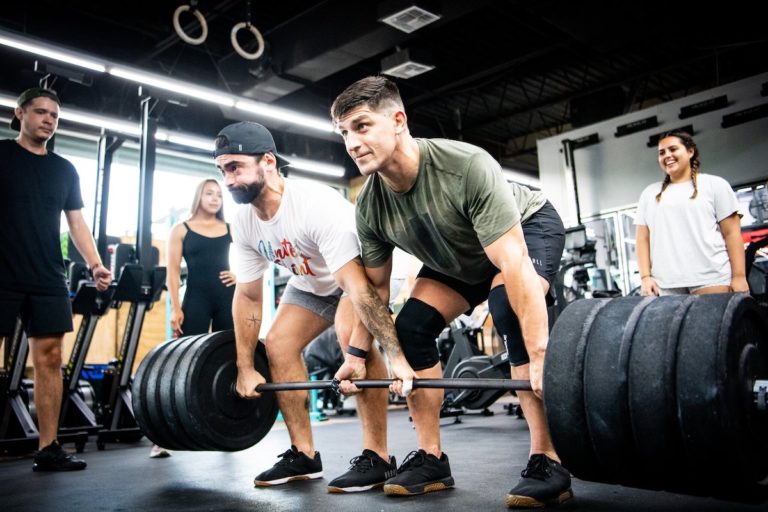
United Front CrossFit | Photo by flsportsguy photography
Team Sports at the CrossFit Games
In 2007, the CrossFit Games were created as a competition to find the fittest athletes in the world. CrossFit introduced a new team division in 2009 to find the fittest teams. The team division is a great representation of CrossFit affiliates around the world.
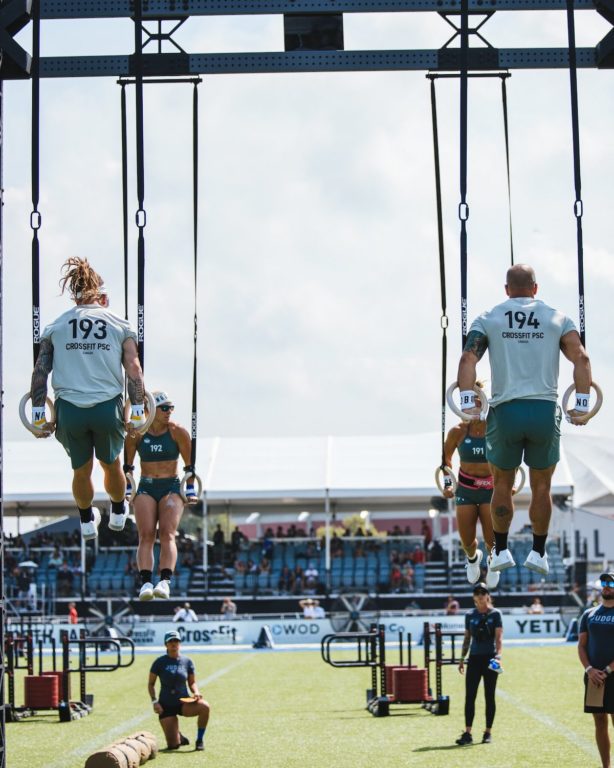
Team CrossFit PSC at the 2023 CrossFit Games | Photo by Joyce Silva
In 2024, teams consist of two male and two female athletes, and the team must work together on the competition floor to complete each test.
Unlike the individual division — where athletes are solely responsible for their own preparation and performance — teams rely on each other to succeed.
“You’re no longer just accountable to yourself in your training, your preparation, your nutrition, and everything that goes into it. You’re now accountable to your teammates,” Lawrence said.
Notable CrossFit Games athlete Noah Ohlsen spent a decade in the individual division. But for the 2024 season, he decided to switch to team and is experiencing the challenges associated with the new division.
“There were multiple instances where I felt like I was not ready to be on a team … I didn’t like the fact that I had to rely on other people,” he said. But after joining a team he admitted, “It’s opened my eyes to how much…you get to experience everything together, and the highs are higher, and the lows can be a bit lower. Being able to celebrate the highs makes it more fun, because it’s not just something you did. It’s something that you collectively did.”
Joining forces with Tola Morakinyo, Lena Richter, and Matilde Garnes to form Team Peak, Ohlsen has spent the last three months building trust and relationships with his new teammates.
Ohslens admits there was some tension when choosing roles, as all four members have extensive CrossFit Games experience. But he soon learned that you have to put your ego aside and focus on what’s best for the team. Only when the team dynamics were established and trust was built could the team really work as one on the competition floor.
“It’s really important on a team to have positive, healthy relationships. I think if you don’t have a good relationship with your teammates, you’re probably less likely to be successful. And that directly applies to life outside of sport (with) relationships with partners, with my wife, with my friends. I think if I don’t spend the time to ensure that those are healthy, my life is gonna be less successful and enjoyable,” he said.
As a former lacrosse player, water polo player, and wrestler, Ohlsen was heavily involved in sports and learned how to work on a team in childhood. But after a decade of competing alone — which he admits was tough at times — Ohlsen is realizing how important team sports are for people to be involved in at some point in their lives.
“I think doing things alone, in general, is lonely. And that applies to sport as well. The times that I was wrestling and taking the mat all by myself … and even when I was competing as a CrossFit athlete all by myself, it was tough. There’s a lot of pressure. It’s all eyes on you and there’s not really anybody to lean on. It’s heavier. Team sports are light and fun (because) you’re not alone,” Ohlsen said.
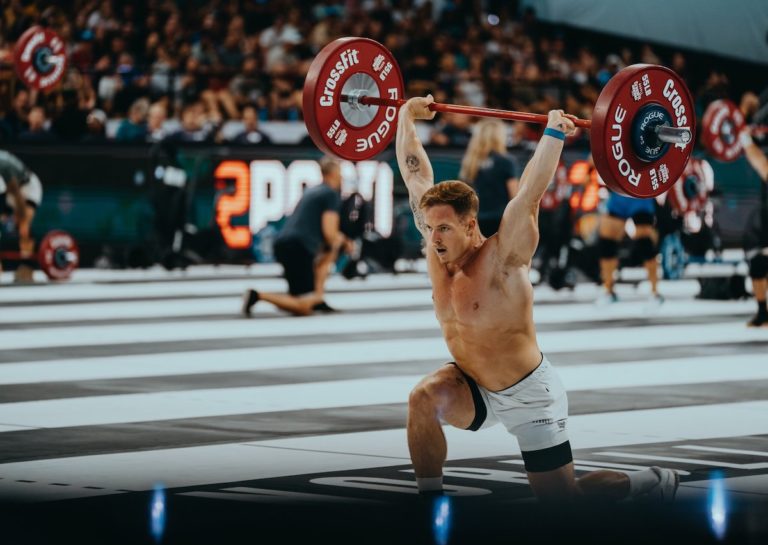
Noah Ohlsen at the 2023 CrossFit Games | Photo by Johany Jutras
Joshua Al-Chamaa — member of the 2023 Fittest Team on Earth CrossFit Invictus — was never involved in sports growing up, but CrossFit gave him the opportunity to experience it later in his life.
“I always felt like growing up, I had an athlete within me, but it never was brought to fruition because the environment that I was in,” he said.
Starting CrossFit in 2016, Al-Chamaa realized he wanted to compete in the Sport of Fitness after just one month. He initially thought he wanted to be an individual athlete, but after qualifying for the 2018 Europe Regional on The Athlete Program team and joining Team CrossFit Invictus for the 2022 season, he fell in love with the team competition.
Al-Chamaa became an athlete at 24 years old. Only then did he start to learn that team sports are fundamental for teaching discipline, respect, and camaraderie.
“I think team sports really gives a way of doing that. You can go to school, you can be around friends, but (in sports) you’re being told what to do and you have to react to that,” he said. “Especially for me as a young boy growing up in Hackney, London, which was rough. Had I had more team sports and more discipline, maybe I would have been in a lot less trouble.”
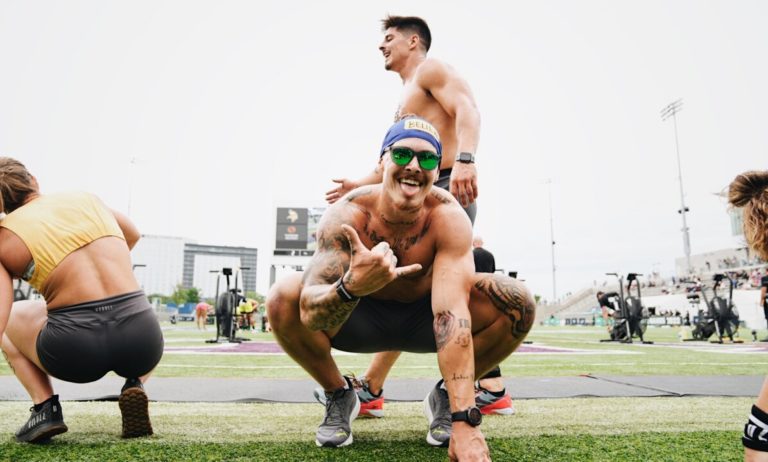
Joshua Al-Chamaa and Team Invictus at the 2021 Granite Games Semifinal
No matter what age you start or what level of CrossFit you choose to engage in — whether it’s a CrossFit class or the CrossFit Games — there will always be an opportunity to be a part of a team.
And team sports make better humans.
Coming Up: The 2024 CrossFit Games Team Quarterfinal
Ohlsen and Al-Chamaa will be competing at the 2024 CrossFit Games Team Quarterfinal starting April 3, 2024.
For more information, visit Games.CrossFit.com.
ABOUT THE AUTHOR

Kelley Laxton is a sports writer and editor for CrossFit, LLC. Graduating from the University of Colorado Boulder with a degree in journalism and sports media, she has become passionate about promoting women in sports through her writing. Kelley has previously written for Her Sport, the first women’s sports magazine in Ireland, and continues to share the stories of strong women in the Sport of Fitness. She currently lives in Ottawa, Ontario, Canada, and enjoys her morning CrossFit class at CrossFit NCR.
Team Sports and CrossFit: Building Better Humans